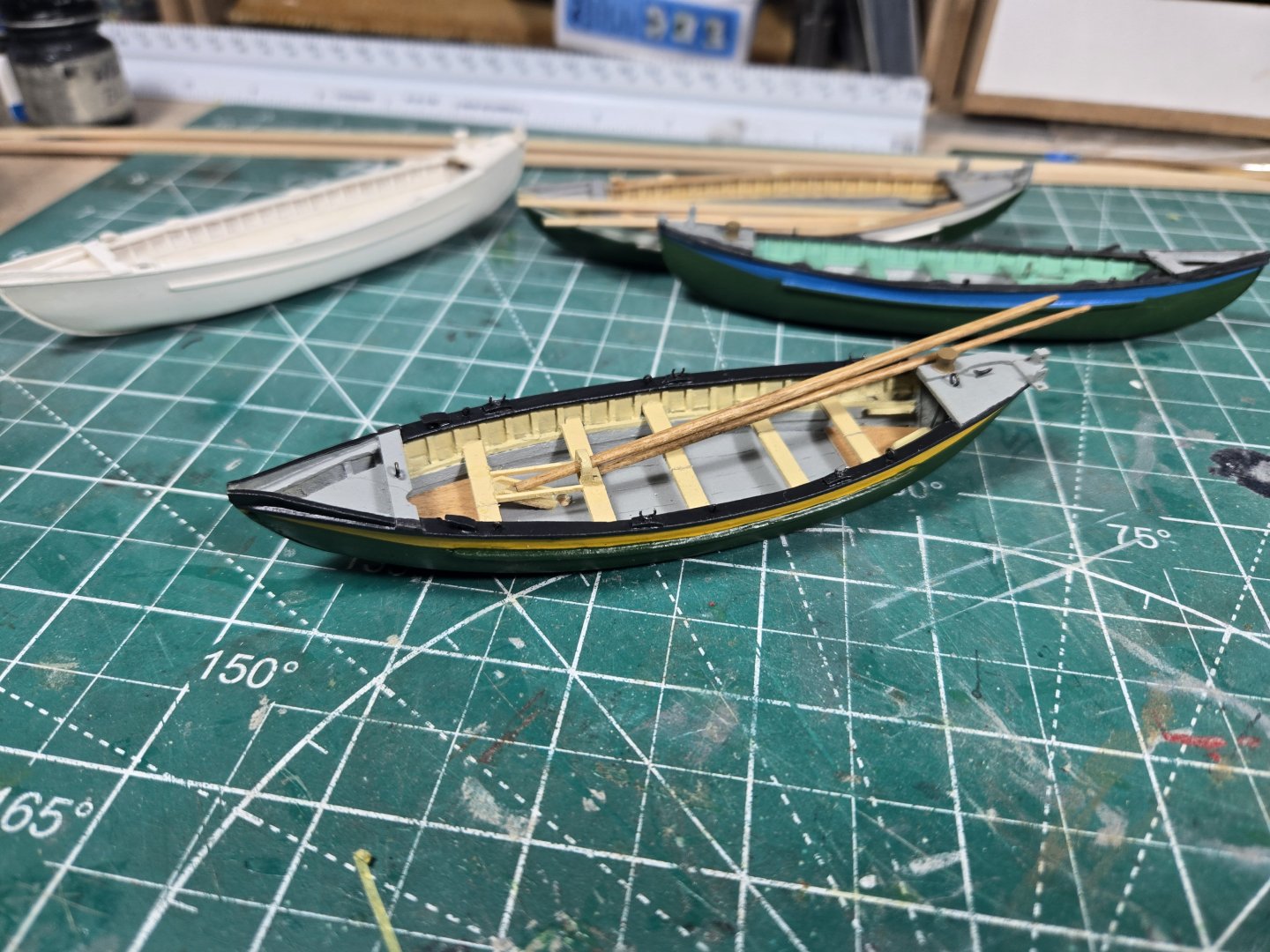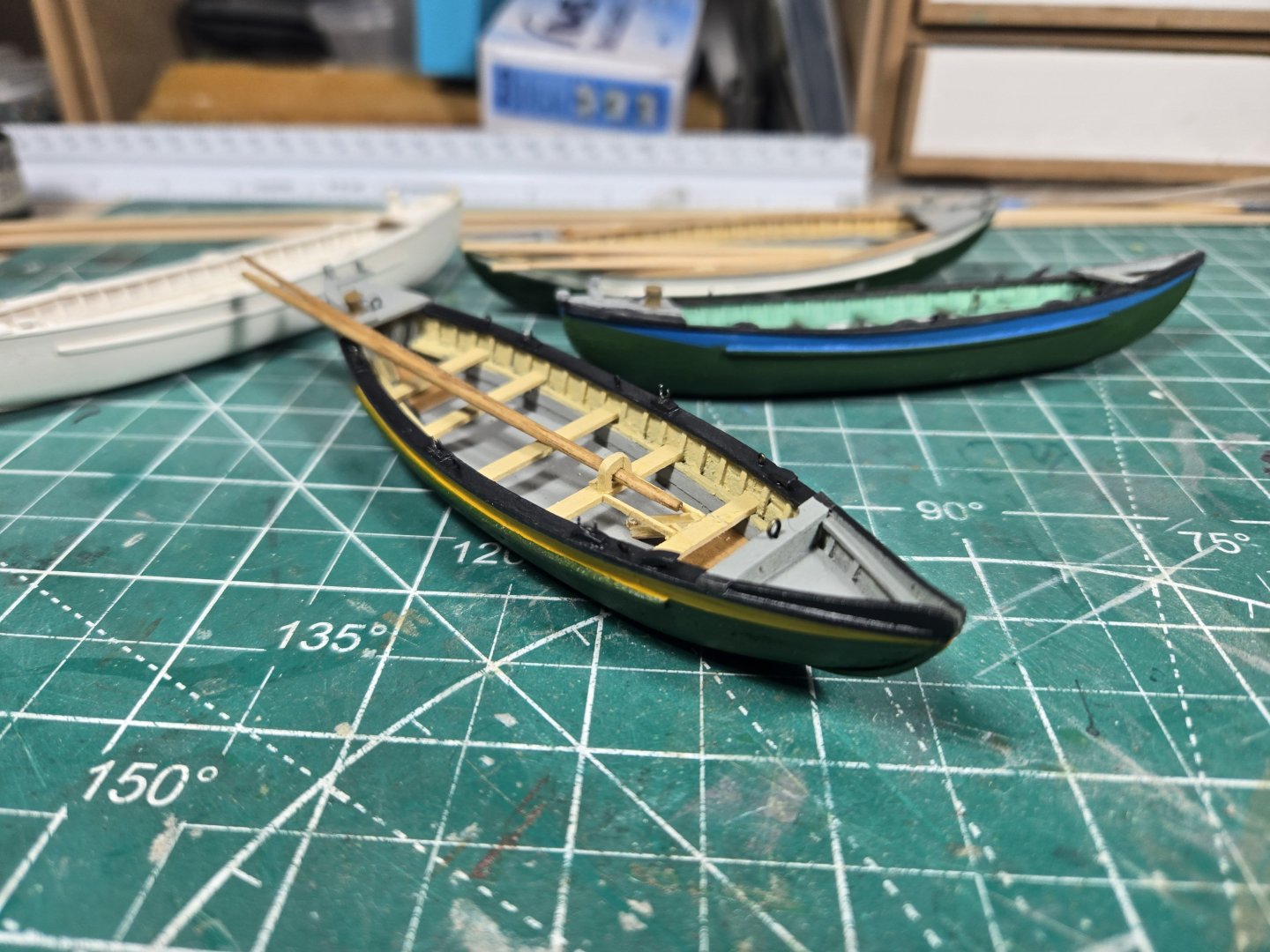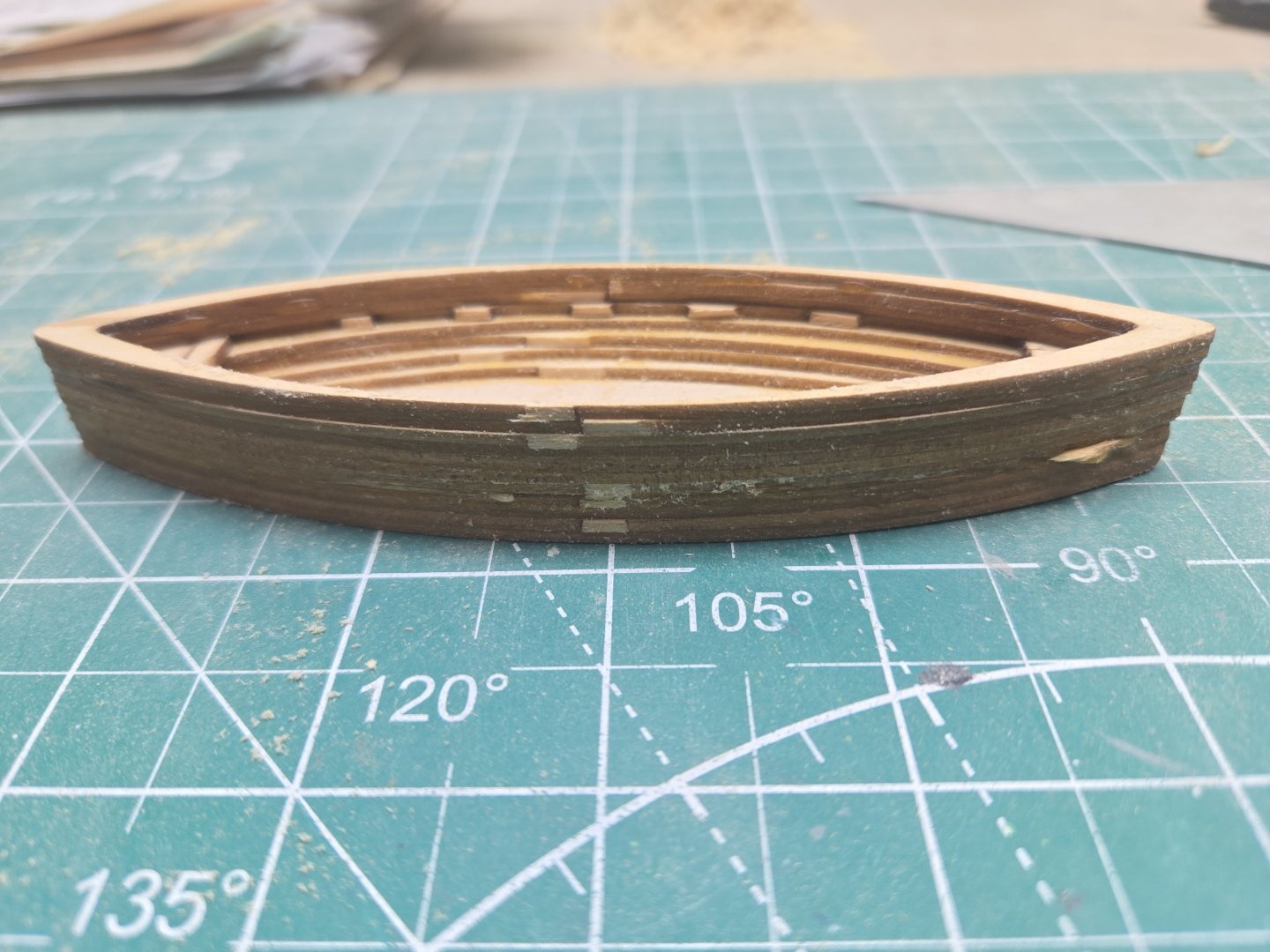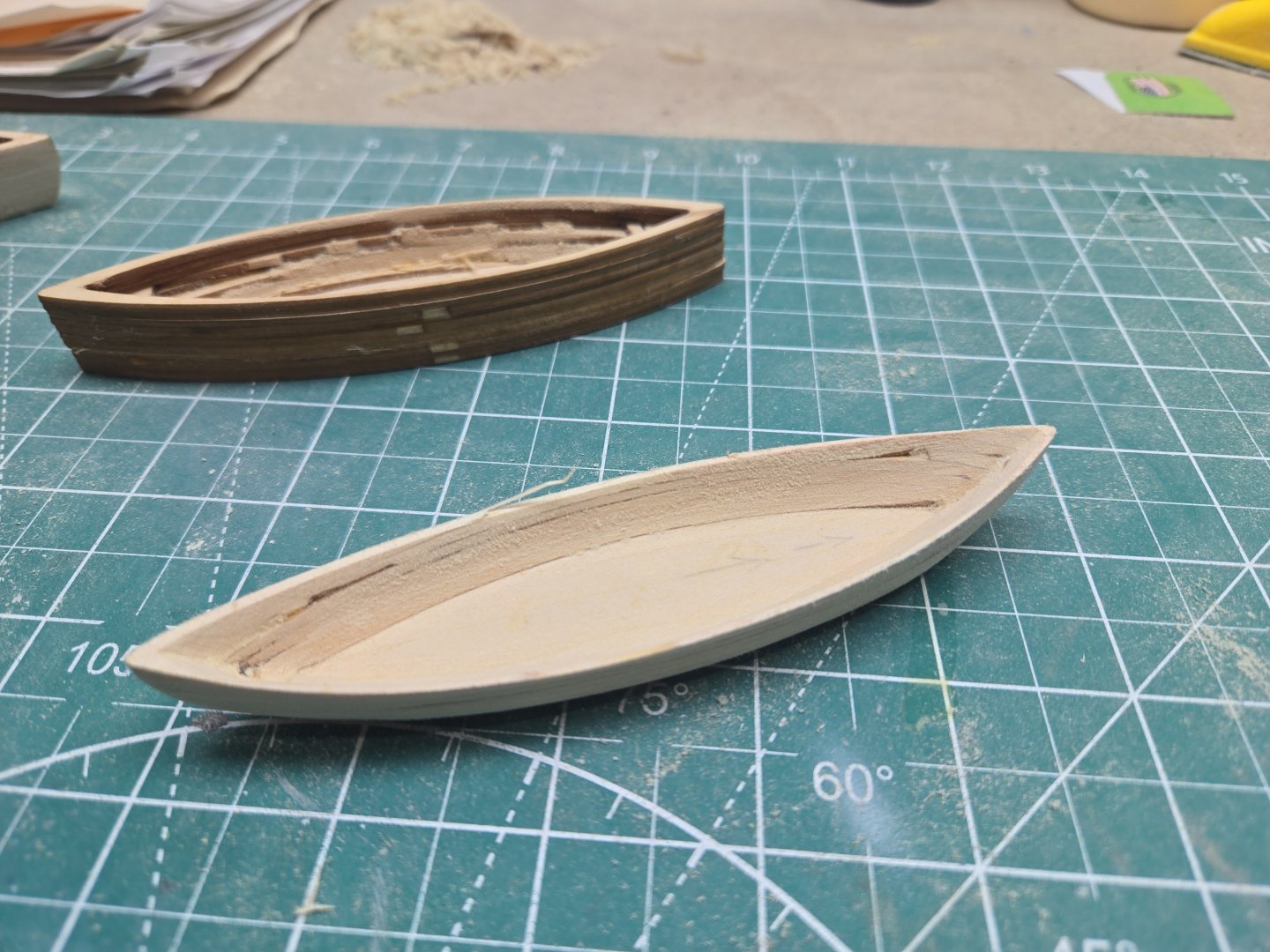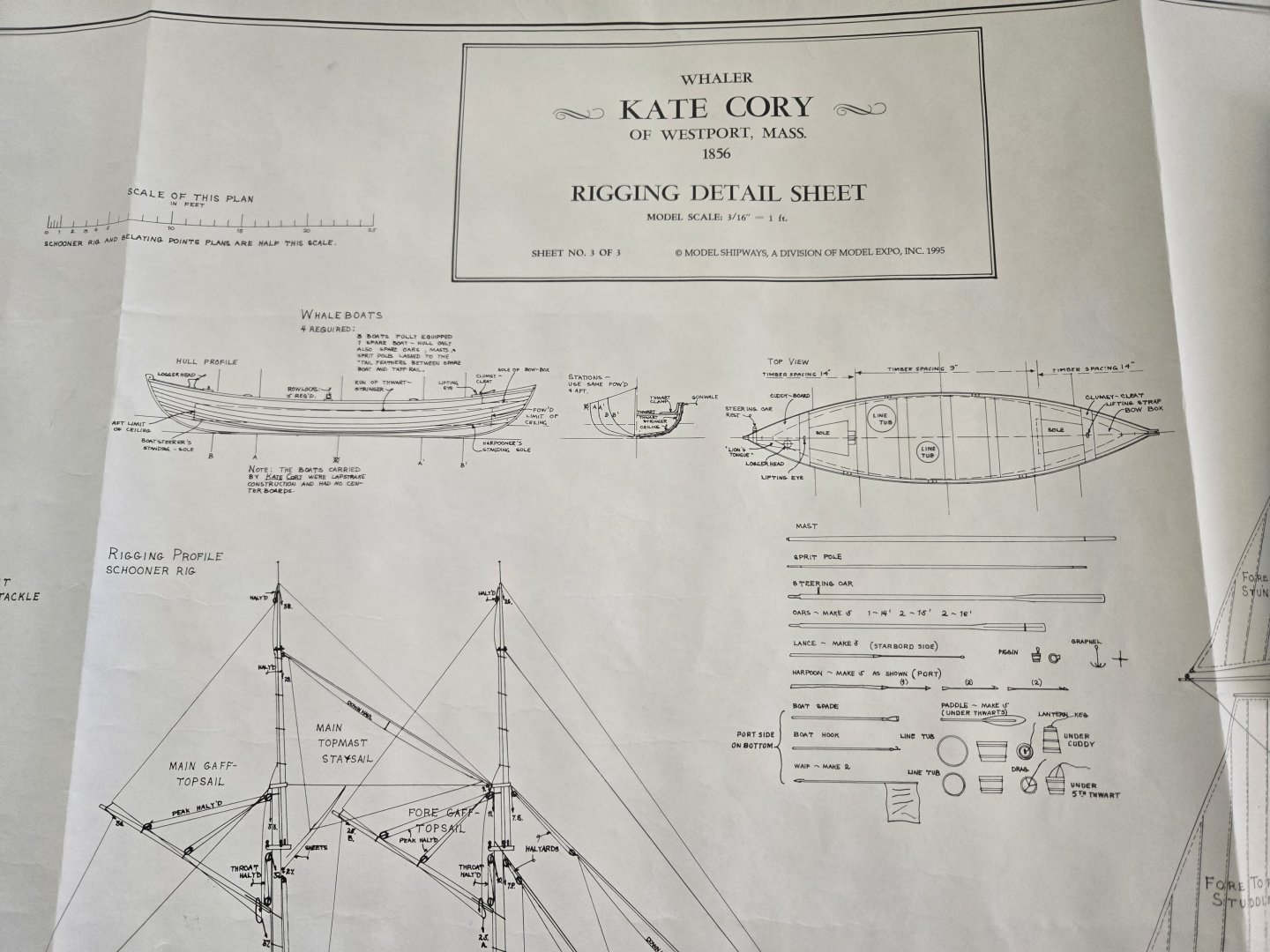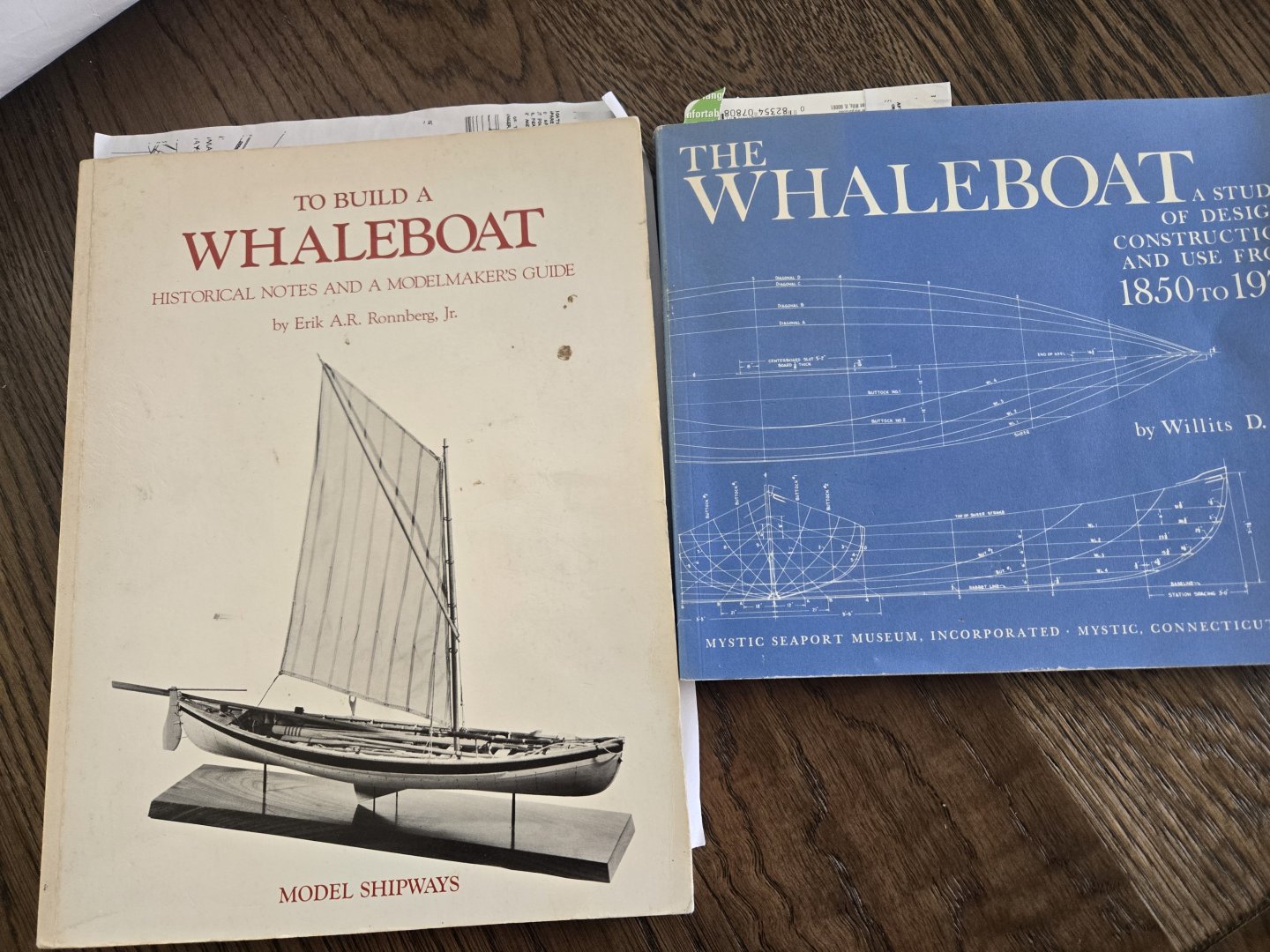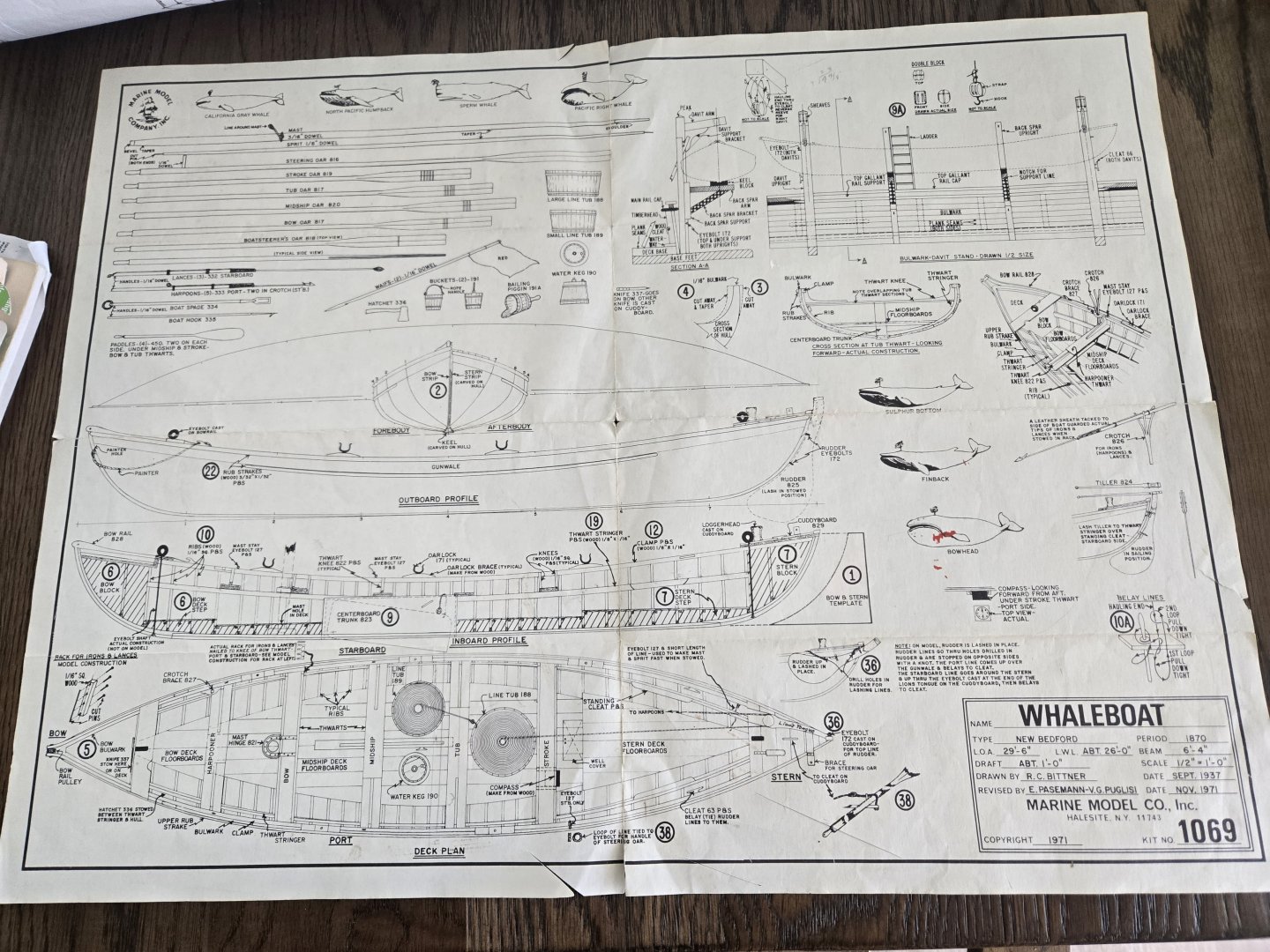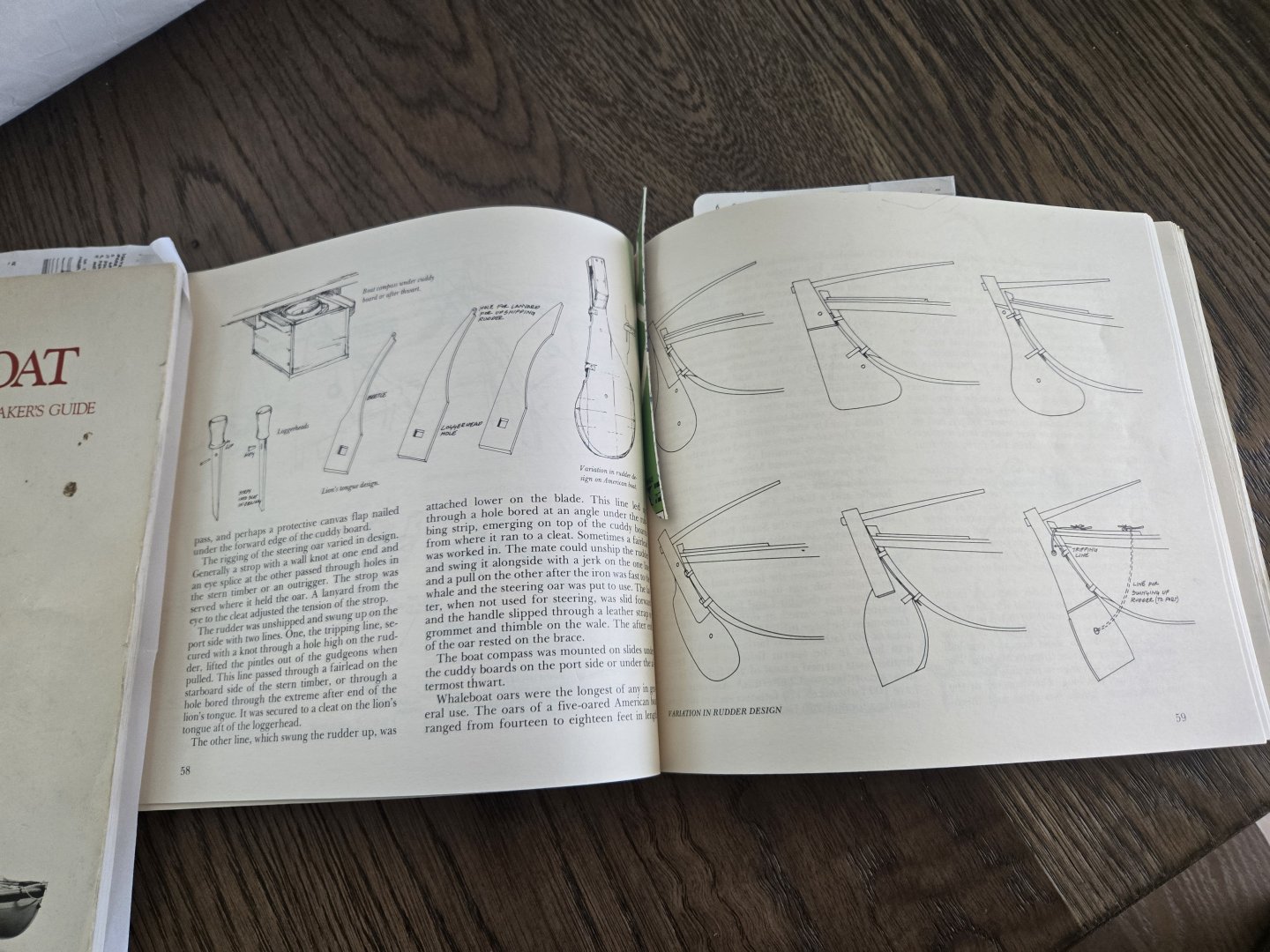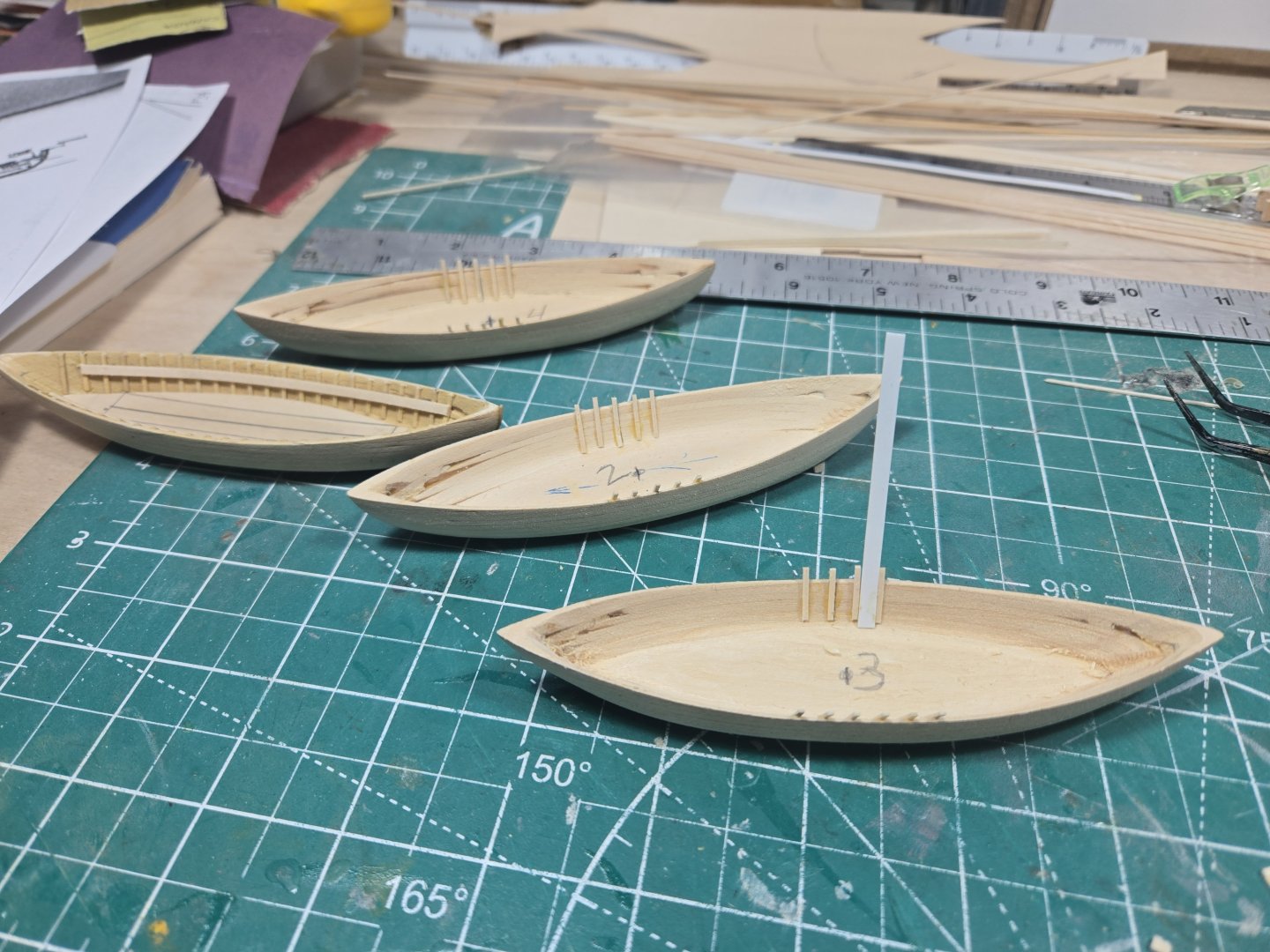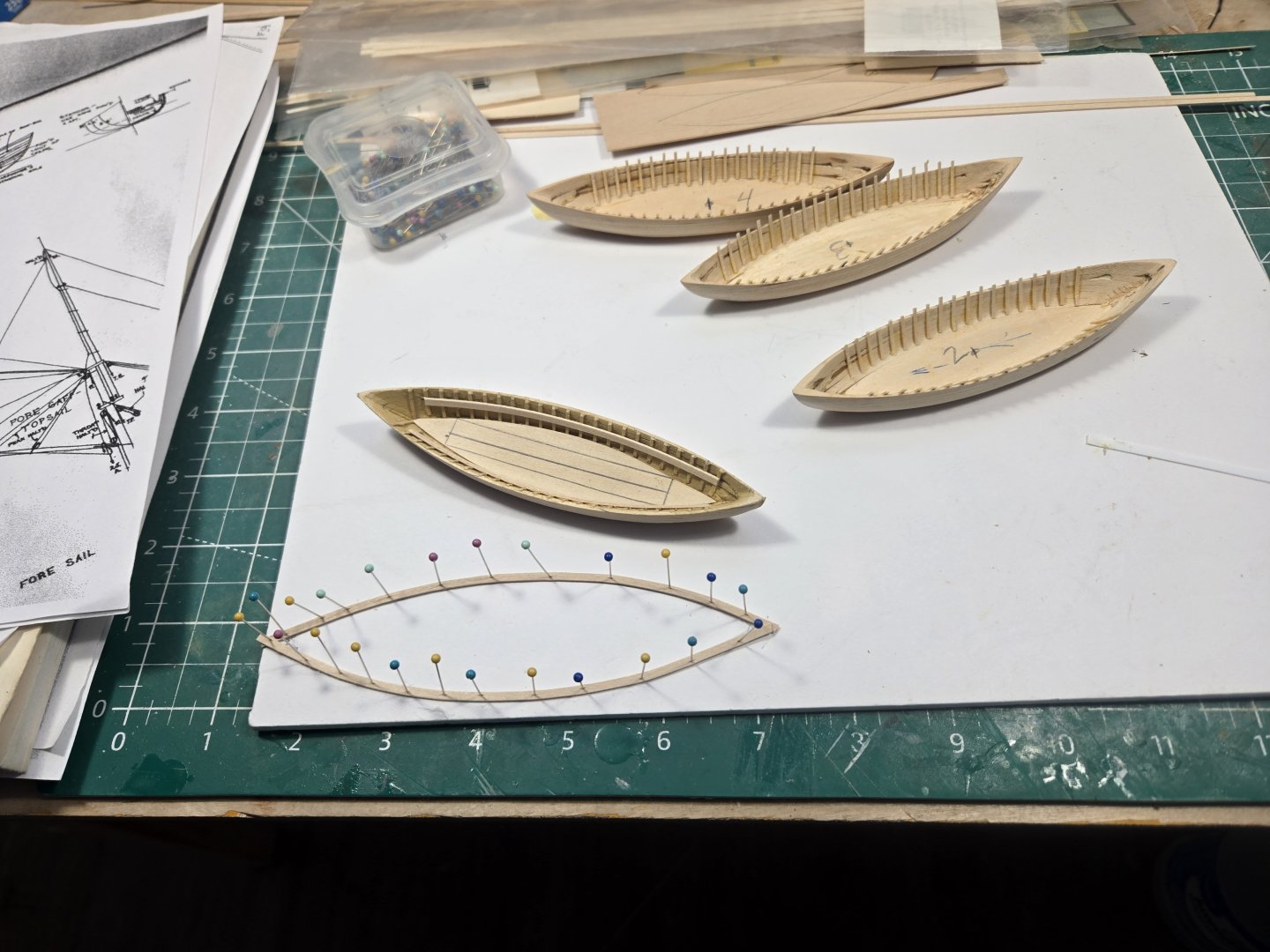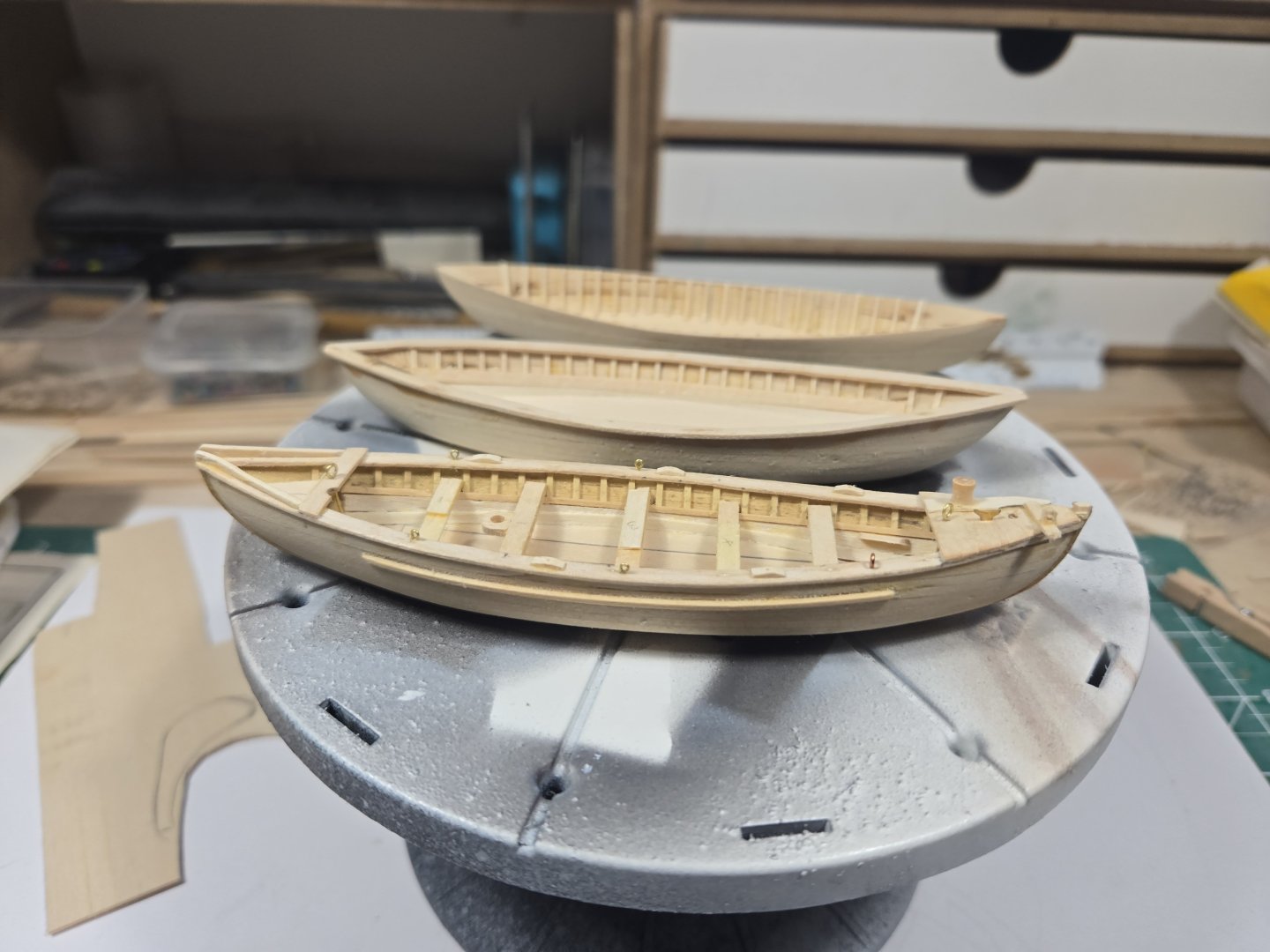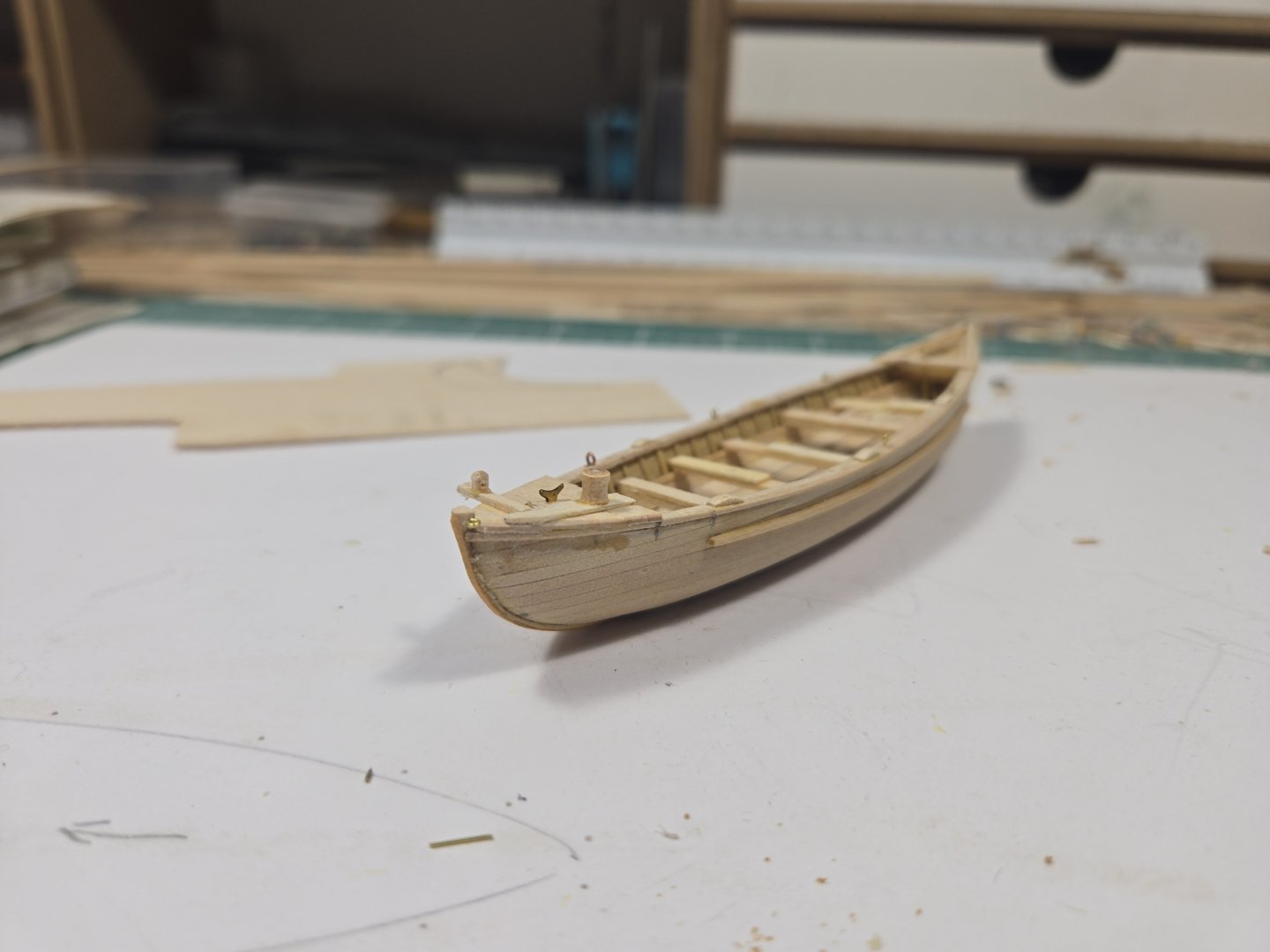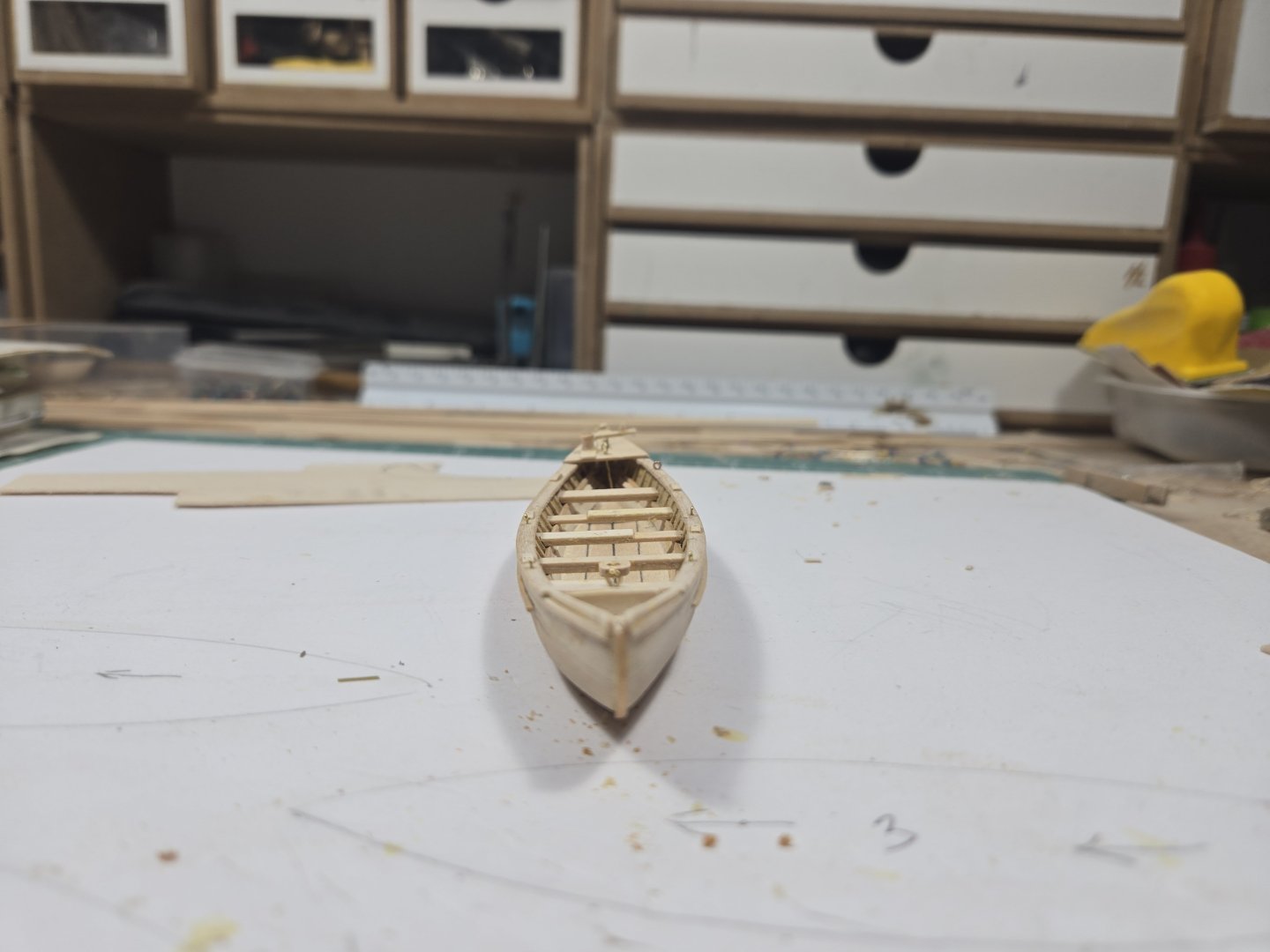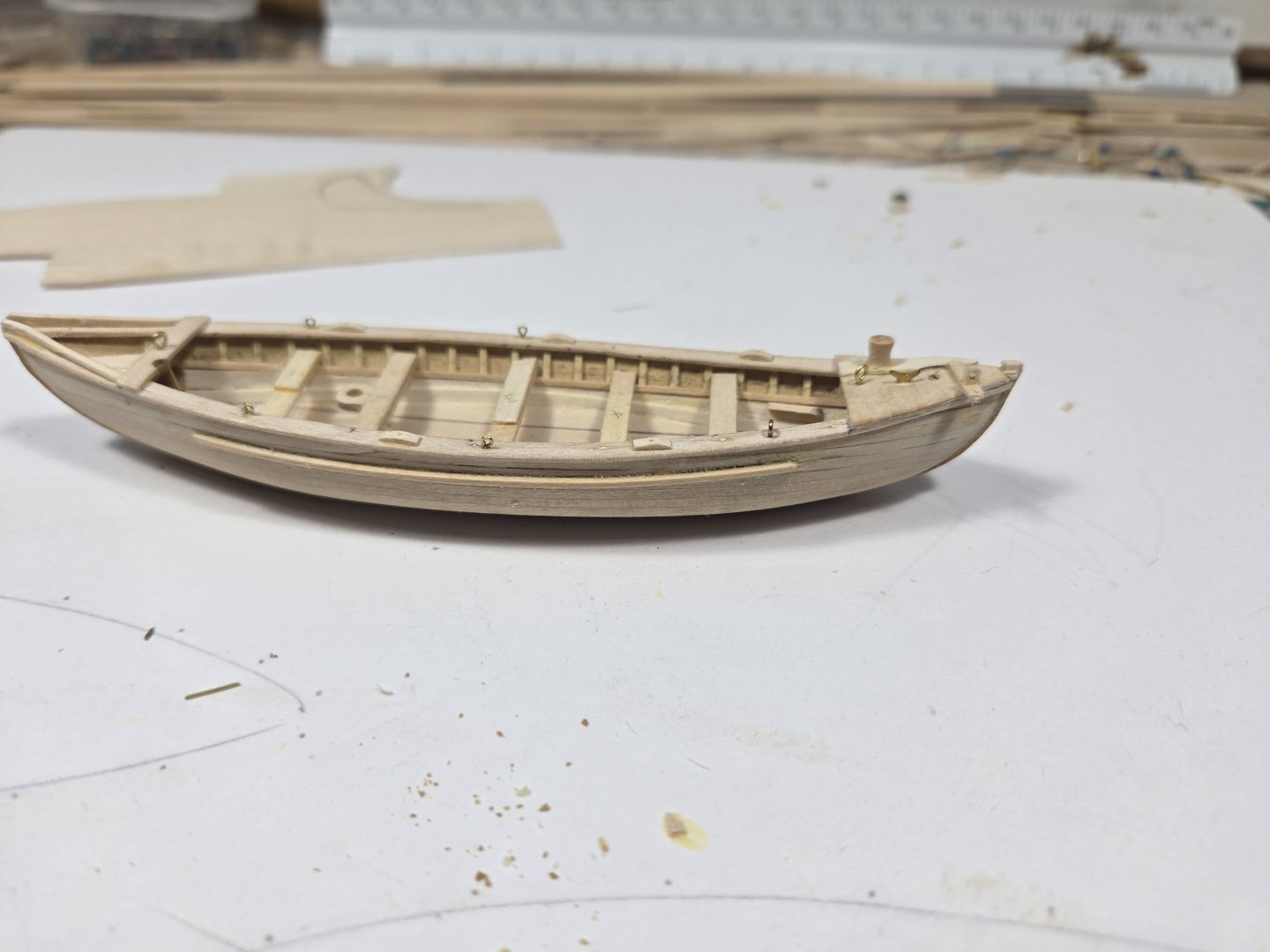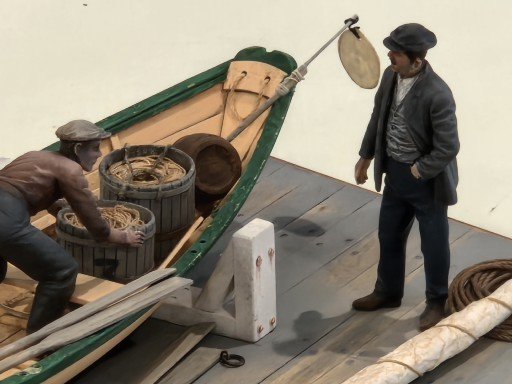-
Posts
143 -
Joined
-
Last visited
Content Type
Profiles
Forums
Gallery
Events
Everything posted by Capt. Kelso
-
Some progress on the whaleboats. Initially I tried to build these in an "assembly line" process. However, these are essentially scratch built and required research to determine which version to build. I found I couldn't simply make four pieces of each part without knowing how a completed one would look. Also, I started going down the detail "rabbit hole"! The more you add, the more you need to add. There's a lot going on with these little boats. After much trial and error, I finally completed a prototype and feel confident that I have as much knowledge and detail to finish the rest. One issue I am struggling with is whether to add furled sail or not? The completed ship will not have sails and I'm wondering if adding the sails to the whaleboats will look out of sync? Anyway, regarding the paint color. My research noted black and dark green were commonly used during this timeframe. Other information regarding a band of color along the gunwale I found in the previously noted reference material. I have found that Tom Lauria's series on Building a Whaleboat has been an endless source of information, inspiration and motivation. The series covers modeling techniques that can be applied to builds beyond whaleboats. There are references to building the tabernacle and its position which I was not familiar with. But are a key detail. While going through the series I learned how to make the oar locks which I feel add needed detail. There is also a "How To" regarding sail making I intend to try. Once I finish the basic boats, time to add the gear!
- 23 replies
-
The original set of whaleboats that come with the kit are rough shaped solid wood similar to the hull. The revised Model Shipways Kate Cory kit includes laser cut pieces you glue up and shape (similar to their C. W. Morgan). I decided to try the new version as it looked like it would be easier to shape. If that didn't work out, I still had the original set. So, I was fortunate to get a new set and used my Rotary tool to shape the inside. Thanks for the feedback!
- 23 replies
-
After approximately seven months I decided to start working on my Kate Cory build again. I had put it on hold as a result of relocating and struggled with getting motivated to continue. It was hard to figure where I stopped and then, how to begin again. So, I decided to start with the whaleboats. I consider the whaleboats along with the tryworks as focal points of the model. The kit plans offer little detail regarding the whaleboats and notes they did not have a centerboard. Nor do they show any detail regarding a rudder. When I researched whaleboats with no centerboard surprisingly, I found there was a whaleboat, the "Edwards Boat" that had neither centerboard or rudder. You may be thinking, why go through all this research, just build a whaleboat! Sure, but which version. Kate Cory was built in 1856; I need to build boats consistent with that time period. As I went through my research material it became increasingly confusing and difficult to pick "one" design. The book "The Whaleboat by Ansel" contains a great amount of detail and options, for example note the variations in rudder and lions tongue designs in the photo. The book also notes that whaleboat design was constantly evolving, earlier versions did not contain items like "peak cleats", there are numerous mast head design variations, etc. So, obviously, there is no one design. Consequently, I zoned in on an old set of Marine Model New Bedford Whaleboat plans and used these a basis to build a prototype. My strategy is to build one complete boat, and assuming I'm happy with it, use it as a model to build the others. After shaping the hulls, I added the ribs using a strip of styrene as a spacer. The rest of the build is basically trial and error using different size wood. I have a couple of minor details to add and then paint. Don't underestimate the time involved in building these boats. They're small but have a lot of detail!
- 23 replies
-
Welcome!
-
Excellent job! I struggled with this kit, but a good learning tool. Your results are exceptional.
- 82 replies
-
- half hull planking project
- half hull
-
(and 2 more)
Tagged with:
-
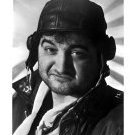
pin vise and drill bits
Capt. Kelso replied to palmerit's topic in Modeling tools and Workshop Equipment
Check EBay, Vintage Watchmakers/Machinists tools, I found a good Starrett. I have found some handy little tools in this category. -
From my experience anything I have painted with enamel or lacquer white paint has "discolored" or faded over time. I was looking at one of my builds completed in 1992, kept in a glass case and noticed how the white paint has faded. I typically apply (airbrush) a coat of flat Dullcote finish to my entire build, hard to tell if that is the cause.
-
Welcome!
-
I have airbrushed with Model Masters Acrylics using a thinner mixture I found on "CYBERMODEL", Distilled water, isopropyl alcohol, flow improver and flow retarder. Used the thinner with Vallejo, AK, Model Shipways paints as well. Just water did not work very well, clogged quickly. Tech Tip: Make Your Own Acrylic Thinner Have only airbrushed acrylics on small items/areas using this thinner. No problems to note. Actually, did not know Model Masters had an airbrush thinner!
-
Looks good! You may want to consider removing the laser burn from the parts to be painted prior to gluing. Laser burn can be difficult to paint over.
- 71 replies
-
- grand banks dory
- midwest products
-
(and 2 more)
Tagged with:
-
PqLear. You raise an interesting question regarding the traditional finish style of wooden ship models. I have rarely seen a weathered wooden ship model, in a museum, competition, or otherwise. Personally, I never felt there was a standard, weathered vs non-weathered. Didn't think much about. In my opinion it was simply a matter of the builder's preference, scale, "imagination" and skill level. Depending upon the type of vessel, I like the application of weathering. It adds a dimension of reality; it offers a nice change and challenge to a normal build. Also, I don't feel weathering hides detail but oftentimes can enhance it with washes and highlights. But the weathering needs to be done proportionately. I have seen models with the copper hull weathered but nothing above the water line! My photos are intended simply to offer a perspective on differing degrees of weathering I apply. A subtle application to the tryworks enhances a basically dull structure whereas the 1/24 scale Dory is given more depth. As the saying goes, "one size doesn't fit all", "different strokes for different folks".
-

Rigging Mast Deadeyes Order
Capt. Kelso replied to acaron41120's topic in Masting, rigging and sails
Agree with rwiederrich easier to install off the model. I learned the hard way, more difficult with the mast installed, especially on a smaller scale like my Harriet Lane. -
Looks like the old Bluejacket Kit I built several years ago. I have built a couple of boats and used "The Dory Model Book" by Harold Payson for reference. There are different versions of the Dory, Clam, Banks, etc.., which did not have a standard color scheme. So, if you are building a working Dory or recreational version your choice of paint color is open. Consider the color scheme of the Midwest Sea Bright Dory Lifeboat (I built that as well), sometimes a combination of bright colors with white makes the model stand out.
- 71 replies
-
- grand banks dory
- midwest products
-
(and 2 more)
Tagged with:
-
No matter which method you use (trial and error) I find doing ratlines is a "mind set". It's a slow tedious time-consuming process!
-
Nice job, exceptional finish work.
- 81 replies
-
- Norwegian Sailing Pram
- Model Shipways
-
(and 1 more)
Tagged with:
About us
Modelshipworld - Advancing Ship Modeling through Research
SSL Secured
Your security is important for us so this Website is SSL-Secured
NRG Mailing Address
Nautical Research Guild
237 South Lincoln Street
Westmont IL, 60559-1917
Model Ship World ® and the MSW logo are Registered Trademarks, and belong to the Nautical Research Guild (United States Patent and Trademark Office: No. 6,929,264 & No. 6,929,274, registered Dec. 20, 2022)
Helpful Links
About the NRG
If you enjoy building ship models that are historically accurate as well as beautiful, then The Nautical Research Guild (NRG) is just right for you.
The Guild is a non-profit educational organization whose mission is to “Advance Ship Modeling Through Research”. We provide support to our members in their efforts to raise the quality of their model ships.
The Nautical Research Guild has published our world-renowned quarterly magazine, The Nautical Research Journal, since 1955. The pages of the Journal are full of articles by accomplished ship modelers who show you how they create those exquisite details on their models, and by maritime historians who show you the correct details to build. The Journal is available in both print and digital editions. Go to the NRG web site (www.thenrg.org) to download a complimentary digital copy of the Journal. The NRG also publishes plan sets, books and compilations of back issues of the Journal and the former Ships in Scale and Model Ship Builder magazines.


